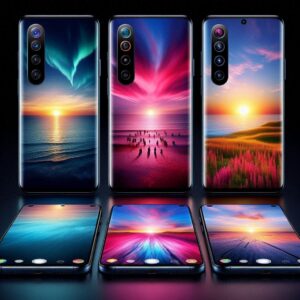What mobile phone has the best all-around camera between the iPhone 4 and the Nexus S?
In today’s digital age, smartphones have become an integral part of our lives, and the camera has emerged as a crucial factor influencing consumer choices. In this article, we will embark on a comprehensive comparative journey between two iconic smartphones of their time: the iPhone 4 and the Nexus S. Our aim is to dissect their camera capabilities to determine which device offers a superior photography experience.

Understanding Camera Specifications
Megapixel Count: Does it matter?
While megapixels are often touted as a measure of camera quality, it’s essential to understand that higher megapixels don’t always translate to better image quality. We’ll explore whether megapixel count truly matters in the context of smartphone photography.
Aperture Size: Shedding light on the subject.
The aperture size of a camera lens affects the amount of light it can gather, thus influencing image brightness and clarity. We’ll delve into the significance of aperture size and its impact on smartphone photography.
Sensor Size: The bigger, the better?
The size of the image sensor plays a crucial role in determining image quality, especially in terms of low-light performance and dynamic range. We’ll discuss the importance of sensor size and its implications for smartphone cameras.
iPhone 4 Camera: Unveiling the Classic Megapixel Count
Resolution vs. Quality: Striking the balance.
The iPhone 4 boasted a modest megapixel count by today’s standards, but its image quality often surpassed that of higher megapixel competitors. We’ll explore how Apple achieved this balance between resolution and quality.
Image Processing: The magic behind the lens.
Apple’s proprietary image processing algorithms played a significant role in enhancing the quality of photos captured by the iPhone 4. We’ll uncover the secrets behind Apple’s image processing magic.
Optical Zoom: Is it a necessity?
Unlike modern smartphones with multiple camera lenses offering optical zoom capabilities, the iPhone 4 relied solely on digital zoom. We’ll discuss the implications of this limitation on the device’s camera performance.
Aperture Size
Low-Light Performance: Let there be light.
Despite its relatively small aperture size, the iPhone 4 delivered commendable low-light performance, thanks to Apple’s optimization efforts. We’ll examine how the device tackled low-light photography challenges.
Bokeh Effect: Crafting artistic shots.
Bokeh, the aesthetic quality of the blur produced in the out-of-focus parts of an image, was achievable to some extent on the iPhone 4. We’ll explore how users could leverage the device’s aperture to create captivating bokeh effects.
Lens Quality: The glass matters.
The quality of the lens used in the iPhone 4’s camera module played a crucial role in determining image sharpness and clarity. We’ll discuss Apple’s approach to lens design and manufacturing.
Sensor Size
Capturing Details: From pixels to clarity.
Despite its smaller sensor size compared to some competitors, the iPhone 4 excelled in capturing intricate details in photos. We’ll analyze how Apple maximized sensor performance to achieve impressive image clarity.
Dynamic Range: Finding balance in exposure.
Dynamic range, the range of light intensities from the darkest to the brightest areas in a photo, was a key consideration for the iPhone 4’s camera. We’ll explore how Apple optimized dynamic range to preserve detail in both shadows and highlights.
Comparative Analysis
Daylight Photography: Testing under the sun.
Both the iPhone 4 and the Nexus S shine in capturing vibrant and detailed photos under ample natural light. In this segment, we’ll scrutinize how each device handles daylight photography, including color reproduction, sharpness, and dynamic range. By analyzing sample images taken in various outdoor settings, we’ll discern any differences in color accuracy, contrast, and overall image quality.
Low-Light Performance: Shine in the darkness.
The true test of a smartphone camera’s prowess lies in its ability to deliver impressive results in low-light conditions. In this segment, we’ll examine how the iPhone 4 and the Nexus S fare when faced with dimly lit environments. From cityscapes at dusk to cozy indoor settings, we’ll evaluate noise levels, detail retention, and overall image clarity to determine which device excels in low-light photography.
Portrait Mode: Blurring the lines.
Portrait photography has become increasingly popular, thanks to features like Portrait Mode that allow users to capture stunning photos with blurred backgrounds, mimicking the bokeh effect of professional DSLR cameras. In this segment, we’ll explore how the iPhone 4 and the Nexus S implement Portrait Mode and compare the results. We’ll assess factors such as edge detection, background blur quality, and overall rendering to determine which device offers a more convincing and aesthetically pleasing portrait photography experience.
Video Quality: Capturing moving moments.
In addition to still photography, the ability to shoot high-quality videos is an essential feature of modern smartphones. In this segment, we’ll evaluate the video recording capabilities of the iPhone 4 and the Nexus S, including resolution, frame rate, stabilization, and audio quality. By analyzing sample footage captured under various lighting conditions and movement scenarios, we’ll determine which device delivers superior video quality and performance, making it the preferred choice for capturing moving moments.
